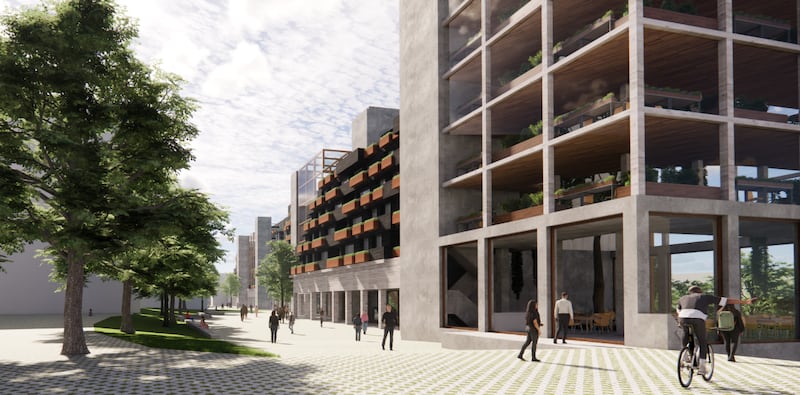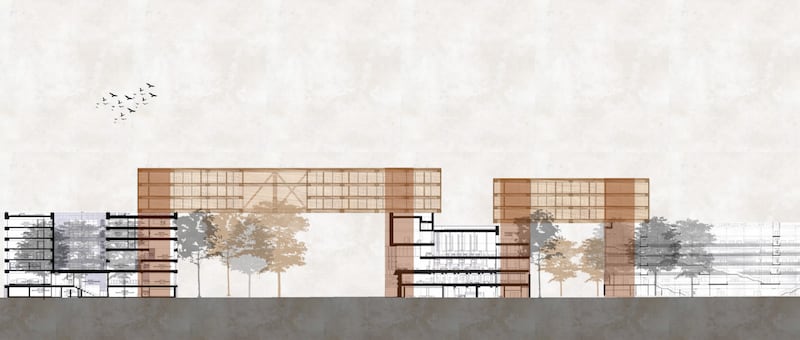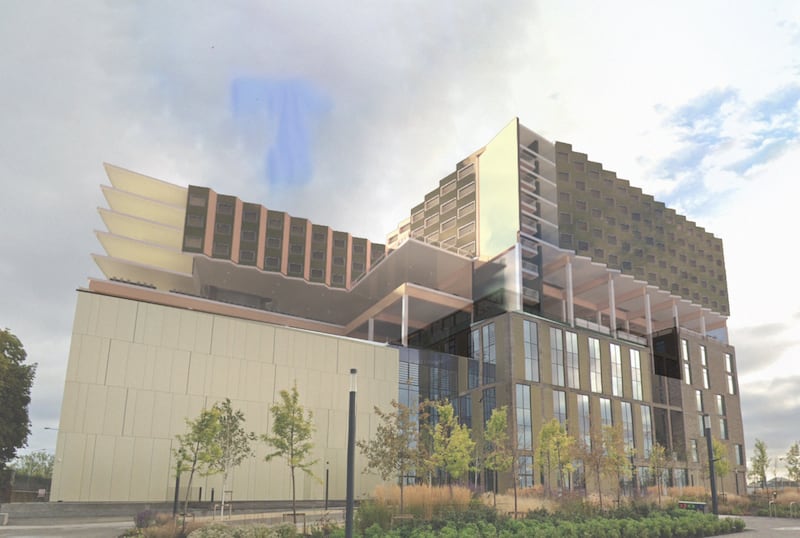Up to 6,000 TU Dublin students could be housed on-campus at Grangegorman, Dublin 7, under accommodation masterplans designed by the university’s fourth-year architecture students.
More than 10,000 students are studying at the Grangegorman campus. Within the next decade, some 22,000 students will have relocated there from TU Dublin’s constituent colleges which have been using 39 buildings around the city.
However, none of the 2,100 on-campus student beds, approved 12 years ago, have been built. While the architecture students said this has been “very disappointing” and has diminished the student experience, the lack of construction provides an opportunity to re-examine the planned housing provision on campus and provide a more realistic number of student beds as a response to the housing crisis.
Grangegorman, a Living Laboratory, an exhibition running at the campus until Friday, showcases 65 projects developed by the architecture students. These projects and bed spaces are divided between four separate masterplans, which could each deliver 4,000 to 6,000 beds for students and staff.
READ MORE
“Nothing has been built here yet in terms of housing, and while that is very disappointing, we are viewing this as an opportunity to put forward alternative projects which are radical, innovative, and also realistic,” said architecture student and exhibition committee member Alex Dillon.

“These projects address the housing crisis and the climate crisis. We looked at the buildings that already exist on the campus, and considered what’s working, what’s missing, and what could be done to deliver housing and make the campus work better.”
The projects aim to be carbon neutral and focus on sustainable building methods using renewable energy, passive heating and ventilation, and water management systems.
The buildings could be used not just for student accommodation, but for faculty, their families and visiting academics. While the masterplans seek to substantially increase the quantum of accommodation planned for the campus, tripling it in most cases, just one or two of the 65 proposals include taller buildings, of up to 20 storeys, with most below eight storeys.
More than 80 per cent of the projects focused solely on the campus, but some incorporated the use of vacant and derelict buildings within five minutes walk of the university.
“We wanted to see if we could renovate or retrofit those buildings, which are on our doorstep and are going to waste, instead of solely focusing on new build,” said architecture student Christine Cruz. “This fits in with the UN sustainable goals in relation to both the climate crisis and the housing crisis.”
Ms Cruz’s project also looked at the potential for developing accommodation on campus without creating a new footprint, by building on top of the campus’s east quad, with three additional storeys spanning across two buildings.

Some projects examined the potential of reusing and extending historic buildings, such as the 1816 clocktower building which faces onto Grangegorman Lower, while others looked at increasing the density of more modern accommodation, said student Mike Donnelly.
“Some of the new purpose-built student accommodation is not the most efficient housing. One project took an existing off-campus building, that the student had himself previously lived in, and reconfigured it with more bed spaces, with communal bathrooms instead of having everything en suite,” he said. “I think most students would prioritise having accommodation they could afford over having a private bathroom.”
For these three architecture students, the lack of campus accommodation is a personal and professional concern, with all three living with their parents right into their fourth year of university.
“I spend three hours travelling every day,” said Ms Cruz. “It didn’t really feel like I was in college, I felt that I didn’t have a university life.”

The plan for just over 2,000 bed spaces was fixed in 2012 under the fast-track planning scheme for the campus, approved by An Bord Pleanála. However, Dermot Boyd, senior lecturer at TU Dublin’s School of Architecture, said this limit needs to be revised urgently.
“The figures for student housing that were approved in 2012, were actually proposed back in 2008, and it really should be revisited at this stage. On-campus accommodation, of which there remains none here, is essential to developing an academic community,” said Dr Boyd.
A TU Dublin spokeswoman said a date for the start of construction of any on-campus accommodation could not be confirmed. “The masterplan for Grangegorman contains a proposal for 2,100 student beds over two phases. However, the date for completion is uncertain, as significant State subvention is required to ensure this accommodation is affordable for the university community, including students and early career researchers.”
- Sign up for push alerts and have the best news, analysis and comment delivered directly to your phone
- Find The Irish Times on WhatsApp and stay up to date
- Listen to our Inside Politics podcast for the best political chat and analysis












